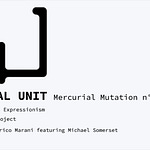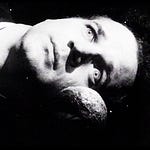Isn’t any artistic process, in its essence, mercurial, unstable, temporarily codified, and subject to reworkings and shifts in interpretation?
Over the past few months, we have been exploring the creative potential of working on our past or recent ideas by creating variations through new and original compositional and production solutions, both in sound and in visuals. In the musical field, we have developed and are continuing to develop transformations of our musical themes through changes in melody, rhythm, harmony, and so on—while keeping the original sources still recognizable. More broadly, we think of this as a reworking or reinterpretation of a concept, deeply altering its core.
This is a creative approach with ancient roots. The great composer Béla Bartók, for example, dedicated a fundamental part of his career to collecting, transcribing, and reworking the folk music of Eastern Europe. He traveled through villages in Hungary, Romania, Slovakia, and Bulgaria with a phonograph to record traditional songs. Unlike other composers who used folk melodies as mere inspiration, Bartók treated this material with great respect, often preserving its melodic structure while exploring its possibilities through rhythmic variations, harmonic reworkings, and orchestration techniques.
In compositions like Romanian Folk Dances, Mikrokosmos, or Improvisations on Hungarian Peasant Songs, the folk material is not simply quoted but artistically transformed into something new, while still retaining its original identity.
Jazz elevated this practice into a method. Just think of My Favorite Things by Richard Rodgers—a song that lives through variations, rearrangements, mutations, and improvisations, as John Coltrane famously did with it. Contemporary music, following the classical tradition, includes figures like Benjamin Britten and his adaptation of John Dowland’s Renaissance song Come, Heavy Sleep for his composition Nocturnal after John Dowland, Op. 70. Countless other examples could be cited.
Electronic music has substantially accelerated these processes of transforming an original into something else. Since the late 1990s and even earlier in the work of musicians like Kraftwerk, the remix has been a tool that first gave DJs and then producers the opportunity to stand out by creating variations on a theme.
As SPECTRAL UNIT, we are developing a series of variations on our own compositions, and here with Mercurial Mutations, we want to present to you the idea of both sonic and visual variation on an original theme of ours.
For us, it’s about imagining mutations, transformations that allow us to look at our work from a different perspective—pushing it toward radical, unexpected, and experimental choices. Here, for example, by stripping down both the sound and visual elements, we are reflecting on silence and color in their purest form as sources of inspiration. That “Less is More” by Ludwig Mies van der Rohe, rooted in Adolf Loos’s Ornament is Crime, is a key to understanding this mutation—where the process has been one of essentializing, cutting, eliminating, stripping away.
An almost nothing.
Adi Newton
Enrico Marani June/2025









